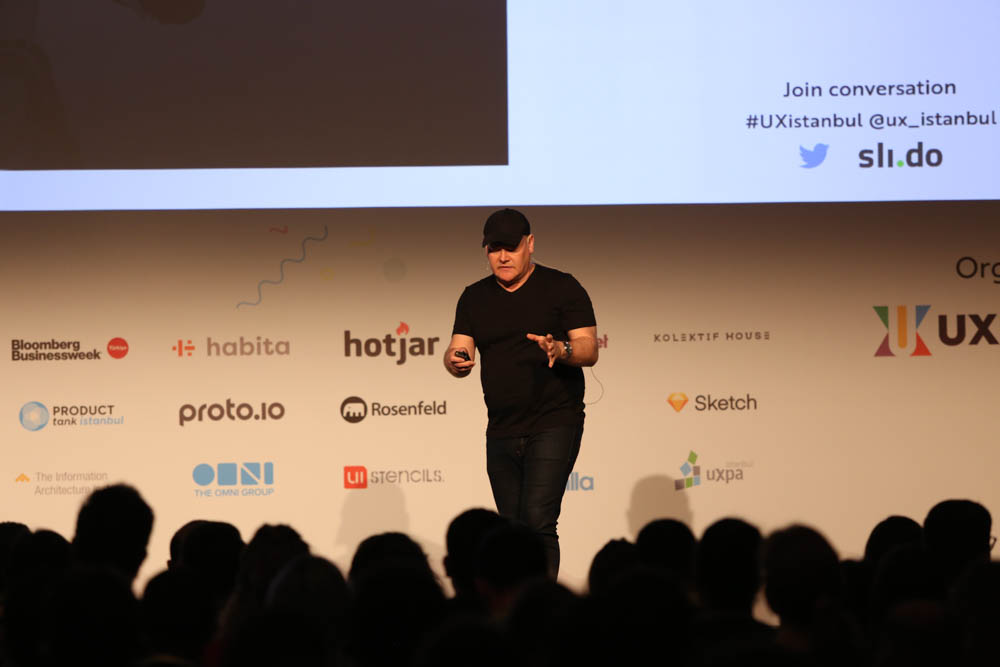I was thrilled to be invited to UXIstanbul and deliver a keynote on digital transformation using Service Design.
This presentation discussed new approaches in designing and innovating to deliver transformation that supports businesses working at speed as they drive to disruptive innovation in a range of sectors including Banking, Financial Services, Transport Utilities and Defence as we move swiftly into the era of cognitive computing and Industry 4.0
The presentation outlined and explained strategic, tactical and practical approaches to innovating at speed using Service Design and UX in an approach I’ve termed Design 4.0; a holistic design approach that utilizes a range of practices, processes and tool that help us collaborate radically within organisations to deliver digital transformation and disruption in the era of cognitive computing and Industry 4.0.
I discussed service design, agility and the emergent field of design operations (DesOps) and how they are part Design 4.0. in industry 4.0. Design 4.0 marries BizOps, DevOps and the emerging field of Design Operations (or DesOps) to support design in Industry 4.0 and importantly Design 4.0 features semi-autonomous and fully autonomous computer systems (machines) that assist in design. Design 4.0 as a term has been used in different ways to describe design that is focused on social innovation (GK Van Patter, 2009), but my definition extends its definition to align it with tasks and activities relating to design and in Industry 4.0.
Robotics, artificial intelligence and other cutting-edge technologies can deliver huge benefits where Government and industry co-operate and in Britain may be able to create 175,000 new manufacturing jobs and generate an extra £455bn if the UK takes full advantage of a “fourth industrial revolution” based on robotics, artificial intelligence and other cutting-edge technologies. That’s the conclusion of a new Government-commissioned report by a group representing some of the UK’s top companies, led by Siemens UK and Ireland boss, Professor Juergen Maier.
Service, experience, interaction and visual design as a set of practices offer strategic and tactical approaches to designing products and services that are proving highly effective in a world that is undergoing a digital transformation. Coupled with Design Thinking and Human Centred Design they have utilised contextual and participatory work with users, actors and customers as part of a participatory design process to gather both qualitative and quantitative data undertaken in an iterative and phased process. Essentially they are analogue in nature and are both people and time intensive.
However, increasingly design is informed with data-derived insights using advancing data collection techniques and processed using increasingly ubiquitous machine learning and cognitive computing applications. A traditional phased design model or lean approach is not always fast enough or efficient in an agile world where bespoke services and user experiences can be configured in an instant to match a users preferences, behaviours and location and their unique circumstances.
Design 1.0 was paper and pen, using physical tools like a ruler featuring a human agent. Design 2.0 was computer assisted design (CAD) featuring applications driven by a human agent. Design 3.0 is assisted design using CAD apps where knowledge based systems learn from the human actor. Design 4.0 is fully autonomous or semi autonomous design that may or may not involved a human actor (a designer, developer or product owner).
For companies to compete in the Outcome Economy as a part of Industry 4.0 that features IoT, machine learning, autonomous systems and cognitive computing requires a new model that I have termed Design 4.0. Design 4.0 comprises of semi-autonomous agile approach that will increasingly feature machine intelligence and a data informed driven strategy that features data garnered using people-to-people, people-to-machine and machine-to-machine interactions. More on this in the coming weeks and months!
